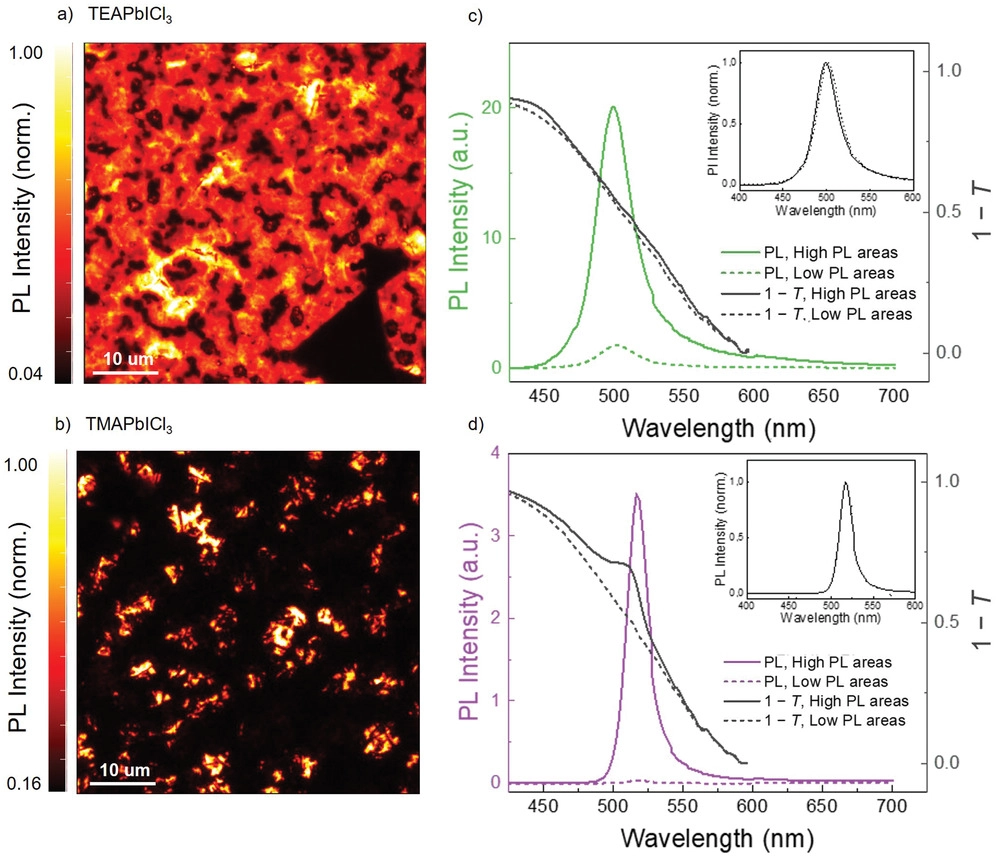Advanced Materials
- Pérovskite
Manipulating Color Emission in 2D Hybrid Perovskites by Fine Tuning Halide Segregation: A Transparent Green Emitter
Auteurs Andrea Zanetta, Zahra Andaji-Garmaroudi, Valentina Pirota, Giovanni Pica, Felix Utama Kosasih, Laxman Gouda, Kyle Frohna, Caterina Ducati, Filippo Doria, Samuel D. Stranks, Giulia Grancini
Résumé
Halide perovskite materials offer an ideal playground for easily tuning their color and, accordingly, the spectral range of their emitted light. In contrast to common procedures, this work demonstrates that halide substitution in Ruddlesden–Popper perovskites not only progressively modulates the bandgap, but it can also be a powerful tool to control the nanoscale phase segregation—by adjusting the halide ratio and therefore the spatial distribution of recombination centers. As a result, thin films of chloride-rich perovskite are engineered—which appear transparent to the human eye—with controlled tunable emission in the green. This is due to a rational halide substitution with iodide or bromide leading to a spatial distribution of phases where the minor component is responsible for the tunable emission, as identified by combined hyperspectral photoluminescence imaging and elemental mapping. This work paves the way for the next generation of highly tunable transparent emissive materials, which can be used as light-emitting pixels in advanced and low-cost optoelectronics.

a,b) Hyperspectral photoluminescence maps for TEA2PbICl3 (a) and TMA2PbICl3 (b) perovskite thin films at emission wavelength of 500 and 516 nm, respectively. c,d) The mean photoluminescence spectra (green and purple curves) and 1 − T spectra (black curves) spatially integrated from the high PL (solid lines) and low PL (dotted lines) areas of the PL maps in (a) and (b).
